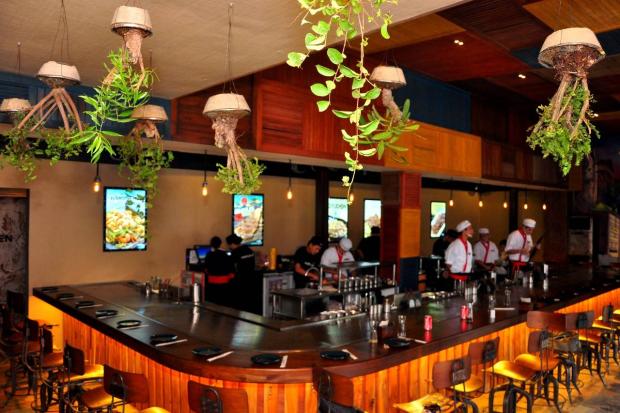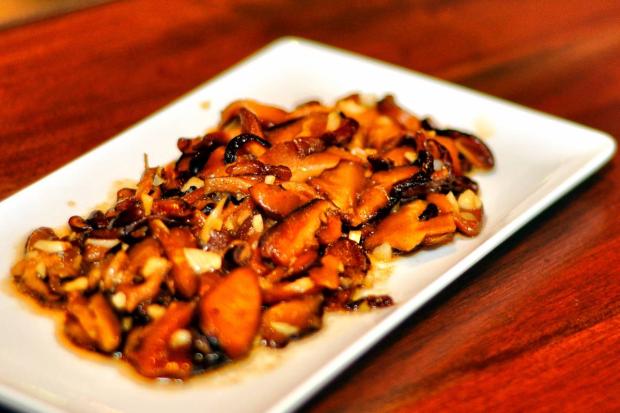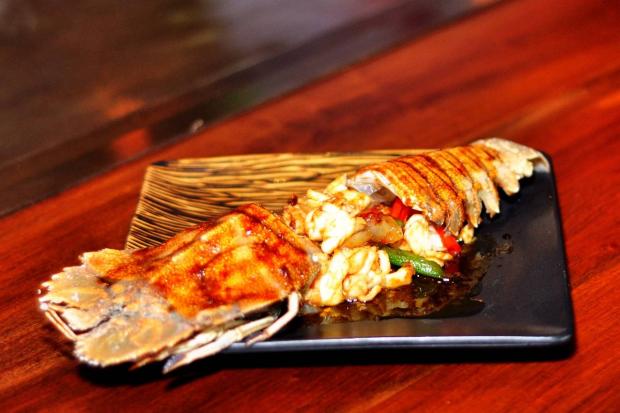Looking at it from the outside, it doesn’t take a genius to discern that the place spells Japanese. And once you decide to get inside the 30-seater Mismukunu Teppanyaki Japanese Restaurant along AS Fortuna in Mandaue City, don’t be deceived that you’re not too sure if it’s the real deal–not that you’d mind, either.
The name is a carefree play of portmanteau of the Filipino words “mismo” which means “exactly” and “kunu” which means “not really.” And why not? On the left side is a wall mural of some of Japanese cartoon characters that have permeated into the Filipino consciousness then and now: Mazinger Z, Astro Boy, et al. Contrast that on the extreme right of the resto where you can see inverted bonsai hanging loose from the ceiling!
But it is what you see at the very center that is the star of the show: a huge bar-like affair where you can see the chefs whip in front of you staple Japanese dish cooked the teppanyaki way, which is actually a style of Japanese cuisine that uses iron griddle to cook food (the word teppanyaki is derived from teppan which means iron plate, while yaki means grilled, broiled, or pan-fried). Although modern teppanyaki grills, of course, have evolved into propane-heated flat surface grills to cook food conveniently in front of guests at restaurants, it’s a pleasant fact to know that you won’t smell of food after taking lunch/dinner because the exhaust are cleverly positioned underground, not the typical chimney-type going upward, and fumes exit unnoticed at the back of the building.
One may find typical ingredients used for Western-style teppanyaki which are beef, shrimp, scallops, lobster, chicken and assorted vegetables but what makes it special is the soybean oil used to cook the ingredients. Strictly Japanese-style teppanyaki may also use noodles (yakisoba), cabbage with sliced meat or seafood (okonomiyaki), which are cooked using vegetable oil, animal fat, or a mixture. Side dishes of mung bean sprouts, zucchini garlic chips (crisps), or fried rice usually accompany the meal.
Other than the beef, chicken, and pork teppanyaki, bestsellers include the rock lobster, hibachi tofu, mixed seafoods, scallops and shitake mushrooms. One may also try the Angus beef and short ribs (karubi cut), and veal liver. Don’t worry, the English-written menu will give you that option to choose what the chef’s recommendation versus going healthy through a white and green color-coding, respectively.
And after enjoying your meal (but even if you are still waiting for your turn at the very comfortable lounge, holding on to a Hello Kitty waiting gadget that lights up), the chef and crew will burst into a dance number to the tune of Voltes V! Fed, you shall leave this gustatory haven and will find the wisdom in the name of the restaurant read in another way: Miss-mo-ko-no? which means: You’ve missed me, right? So you plan ahead the next visit soon enough and turn Japanese again and again.





